Carmel, IN Pollen and Allergy Report for Summer 2023
Pollen Allergy Trends in Carmel, IN
When is pollen lowest in Carmel, IN?

February
Lowest month total PPM
Avg. PPM
When is pollen highest in Carmel, IN?

April
Highest month total PPM
Avg. PPM
How does pollen in Carmel, IN compare to Indiana?
Carmel has a lower average PPM than the state of Indiana.
Carmel yearly avg PPM:
Indiana yearly avg PPM:
How does pollen in Carmel, IN compare to the USA?
Carmel has a lower average PPM than the USA.
Carmel yearly avg PPM:
USA yearly avg PPM:
Is pollen worse this year in Carmel, IN?
Spring 2023 was worse than spring 2022.
Spring 2023 PPM:
Spring 2022 PPM:
Average PPM in Carmel, IN
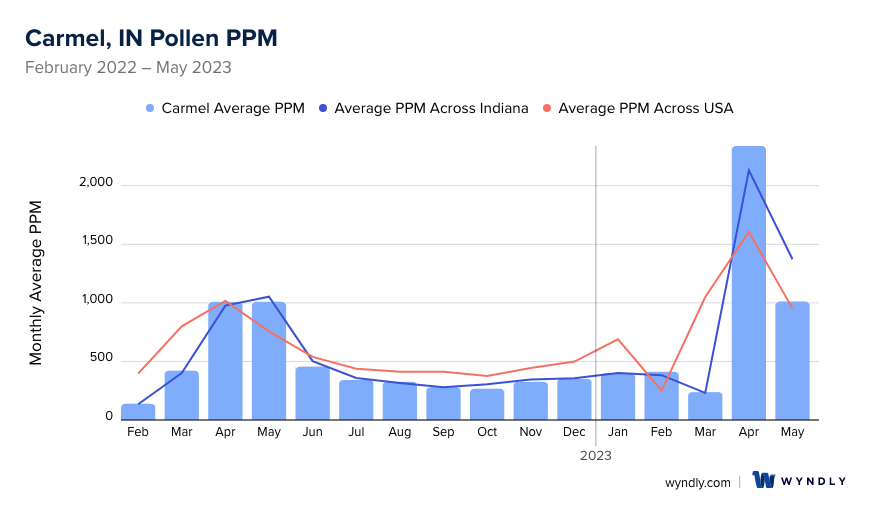

Carmel, IN Pollen and Allergy Breakdown by Month
Grass
When is grass pollen highest in Carmel, IN?
April has the highest grass pollen in Carmel, IN with an average PPM of
When is grass pollen lowest in Carmel, IN?
September has the lowest grass pollen in Carmel, IN with an average PPM of
Tree
When is tree pollen highest in Carmel, IN?
April has the highest tree pollen in Carmel, IN with an average PPM of
When is tree pollen lowest in Carmel, IN?
July has the lowest tree pollen in Carmel, IN with an average PPM of
Weed
When is weed pollen highest in Carmel, IN?
April has the highest weed pollen in Carmel, IN with an average PPM of
When is weed pollen lowest in Carmel, IN?
February has the lowest weed pollen in Carmel, IN with an average PPM of
Carmel, IN Pollen Monthly Breakdown by Pollen Type
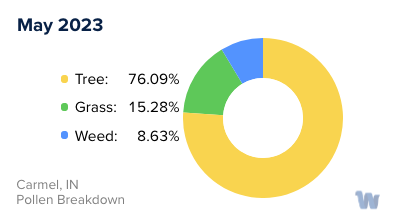
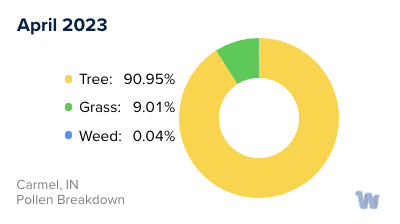
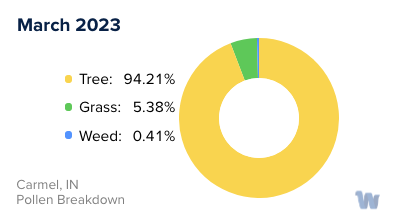
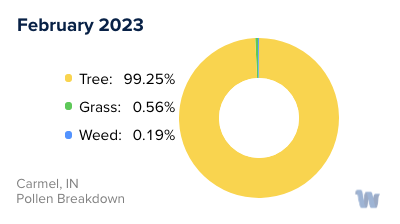
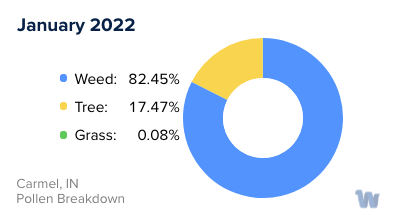
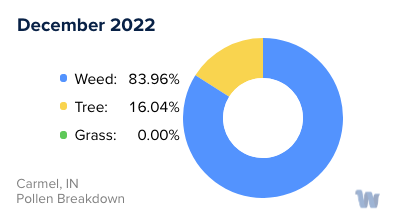
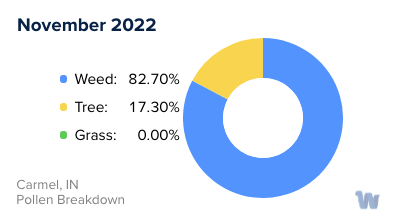
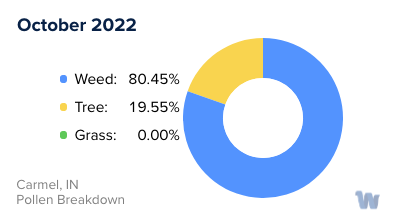
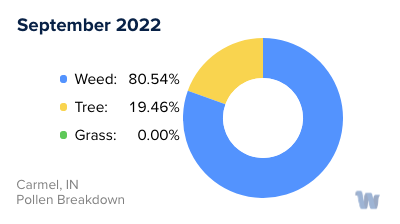
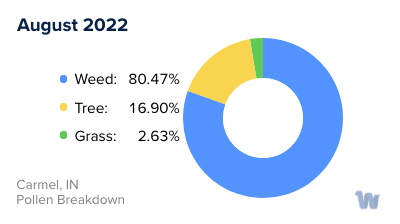
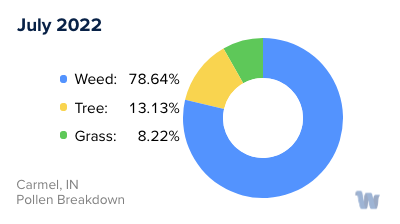
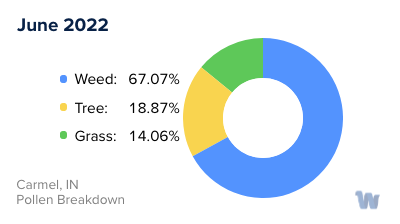
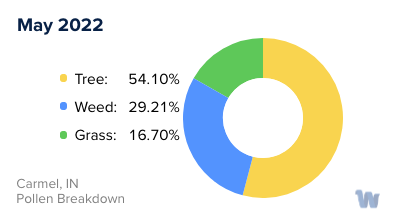
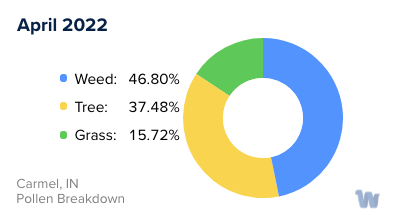
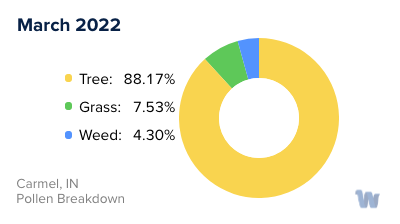
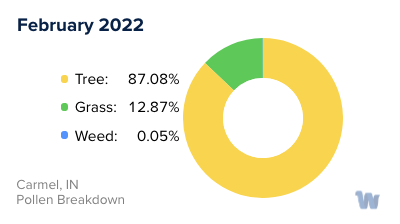
Pollen and Hay Fever in Carmel, IN
Carmel, Indiana, with its beautiful landscapes and vibrant greenery, is a city where many residents enjoy spending time outdoors. However, for those with pollen allergies, this picturesque scenery can come at a cost. Pollen allergies, also known as hay fever or allergic rhinitis, can cause discomfort and disrupt daily life for many individuals in Carmel.
One of the primary triggers of pollen allergies is, of course, pollen itself. In Carmel, various types of pollen can be found throughout the year, contributing to different allergy seasons. Tree pollen tends to be most prevalent during the spring months, as species like oak, maple, and birch release their microscopic pollen grains into the air. This can lead to symptoms such as sneezing, runny nose, itchy eyes, and congestion in individuals who are allergic.
As spring gives way to summer, grass pollen takes center stage as a common allergen in Carmel. Lawns and meadows are teeming with grass species like Bermuda grass and Kentucky bluegrass, which produce abundant pollen. Many people with grass pollen allergies experience intensified symptoms during this time, including persistent sneezing, watery eyes, and an itchy throat.
When fall arrives in Carmel, ragweed pollen becomes a significant trigger for hay fever. Ragweed is a robust weed that thrives in open fields, along roadsides, and in vacant lots. Its pollen can travel for miles through the air, affecting individuals who are allergic even if they are not in close proximity to the plant itself. The symptoms of ragweed pollen allergies are often similar to those experienced during the spring and summer, causing discomfort for many people in Carmel.
Understanding the types of pollen prevalent in Carmel throughout the year can help individuals with pollen allergies anticipate and manage their symptoms. While treatments and remedies are available to alleviate hay fever, it is essential for residents to stay informed about the local pollen seasons and take necessary precautions to minimize exposure.
Living in Carmel, Indiana, with its diverse plant life and changing seasons, can be a delight for many. However, for those with pollen allergies, it is important to be aware of the different types of pollen and the seasons in which they are most abundant. By staying informed and taking necessary precautions, individuals can better manage their hay fever symptoms and continue to enjoy all that Carmel has to offer.


